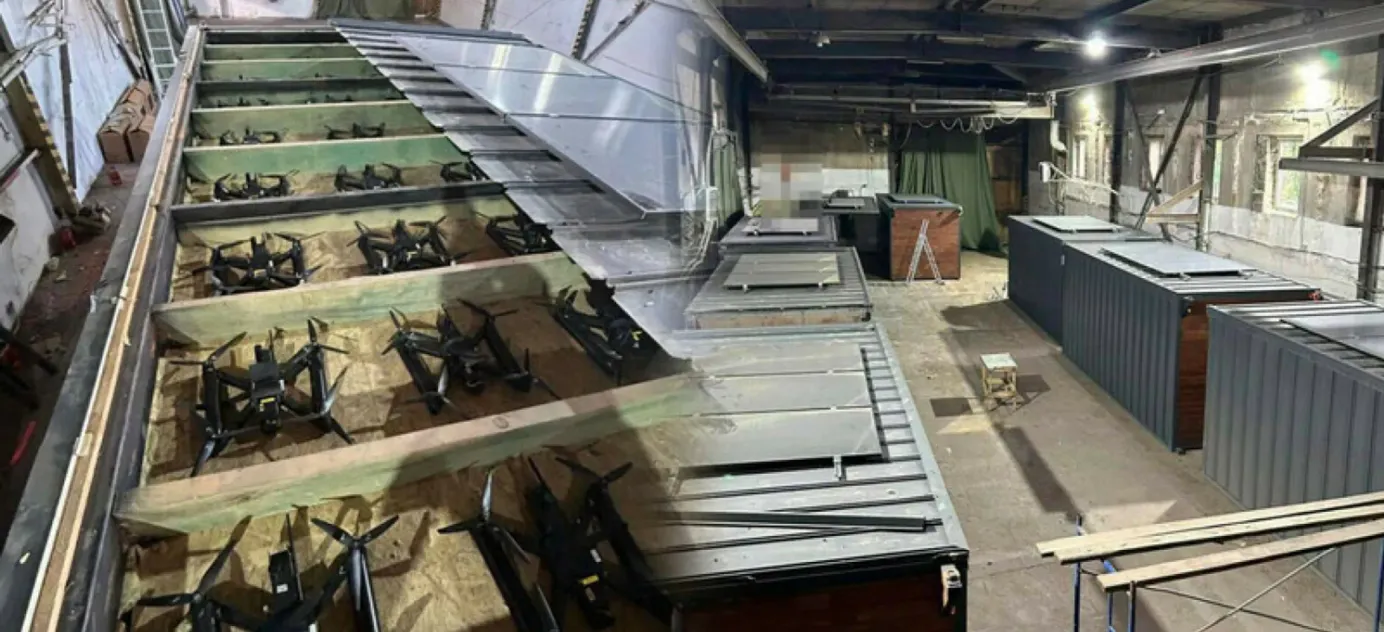
Le Pearl Harbor de la Russie ?
Bonjour ! Cette semaine, nous examinons en profondeur les attaques de l'Ukraine contre les bases aériennes russes abritant sa flotte de bombardiers stratégiques : quelles sont les conséquences pour la guerre, la Russie pourrait-elle riposter par une arme nucléaire et pourquoi la télévision d'État n'en parle pas ?
L'Ukraine attaque la flotte russe de bombardiers stratégiques lors d'une étonnante opération de drone
Dimanche, l'Ukraine a mené une attaque sans précédent à l'intérieur du territoire russe. À l'aide de drones, apparemment introduits clandestinement en Russie à l'avance, Kiev a frappé plusieurs aérodromes où l'armée russe abrite sa flotte de bombardiers stratégiques. Sur le papier, une telle attaque pourrait être considérée par la Russie comme un prétexte à l'utilisation d'armes nucléaires, mais il est peu probable que Moscou prenne une mesure aussi désespérée.
Des drones à partir de camions
L'opération "Spiderweb", comme l'a surnommée le service de sécurité ukrainien, a consisté en l'attaque par des drones de quatre bases aériennes situées dans différentes parties de la Russie. Deux d'entre elles, Ivanovo et Dyagilevo, se trouvent dans des régions proches de Moscou, mais les deux autres, Olenya dans la région de Mourmansk et Belaya à Irkoutsk, sont profondément enfoncées dans le territoire russe, à quelque 1 700 et 4 500 km de la frontière avec l'Ukraine. L'attaque de Belaya a été la première frappe de drone en Sibérie depuis le début de la guerre.
Selon le président ukrainien Volodymyr Zelensky, l'opération a été préparée pendant 18 mois et a utilisé 117 drones FPV et le même nombre d'opérateurs de drones. M. Zelensky a déclaré que l'attaque avait touché 34 % des porte-missiles de croisière stratégiques russes présents dans les bases. Nous savons que les avions visés comprenaient(1,2) Тu-95МSs, Тu-160s, Тu-22М3s et des transporteurs An-12. Le SBU ukrainien a affirmé que lesattaques avaient endommagé des avions d'une valeur de 7 milliards de dollars.
Le plus intéressant - et nous pouvons déjà le dire publiquement - est que le "bureau" de nos opérations sur le territoire russe se trouvait juste à côté du siège du FSB dans une région russe", a déclaré M. Zelensky.
Une source au sein de l'armée ukrainienne a déclaré aux médias que les drones avaient décollé de camions qui s'étaient approchés des bases aériennes (une affirmation confirmée par des vidéos de témoins oculaires). Les forces armées ukrainiennes ont d'abord envoyé les drones en Russie, cachés dans des cabines mobiles en bois(voir ici pour des photos), puis ont ouvert les toits à distance pour permettre aux drones de sortir en masse et d'attaquer les bases aériennes.
Selon toute vraisemblance, au moins l'un des camions, qui transportait des drones vers la région de l'Amour, a explosé avant d'arriver à destination. Cet incident s'est produit non loin de l'aérodrome d'Ukrainka, qui n'a pas été attaqué dimanche.
Les personnes qui ont participé à la préparation de l'attaque à l'intérieur de la Russie ont quitté le pays avant qu'elle ne commence, a déclaré M. Zelensky. Mais au moins un chauffeur de camion a été arrêté dans la région de Mourmansk. Il ne savait peut-être pas ce qu'il transportait.
Réponse nucléaire ?
L'Ukraine ne s'est pas contentée de frapper des aérodromes russes, elle a détruit et endommagé une partie de l'aviation stratégique de la Russie, en particulier ses bombardiers nucléaires. Avec les sous-marins nucléaires et les missiles balistiques intercontinentaux, les bombardiers stratégiques font partie de la triade nucléaire russe. Depuis le début de la guerre, des Tu-95, Tu-22M3 et Tu160 ont mené des attaques de missilessur des villes ukrainiennes.
Cet article est disponible exclusivement pour les abonnés de THE BELL. PRO
Commencez pour 1 $ le premier mois avec THE BELL.PRO, votre guichet unique pour comprendre l'économie et la politique russes, écrit par des experts primés.
S'abonner pour 1-
Accès illimité à une archive de plus de 300 articles, avec 20 articles supplémentaires chaque mois
-
Deux lettres d'information hebdomadaires approfondies sur les événements récents
-
Rejoignez les rédacteurs et auteurs de The Bellpour des webinaires sur l'économie et la politique russes.
Vous avez déjà un compte ? S'identifier









